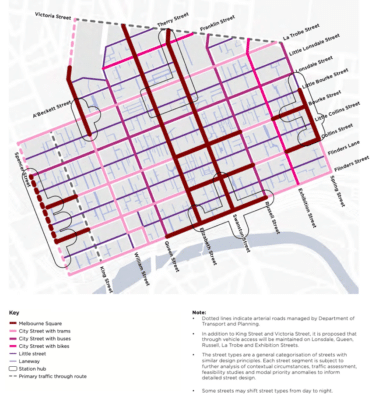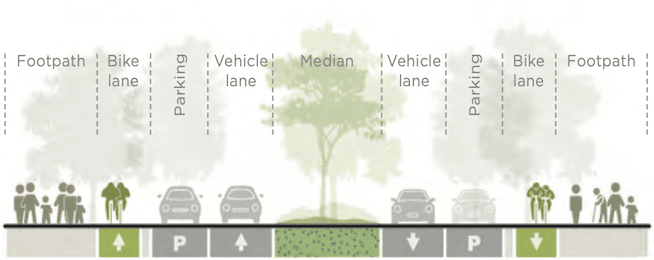The City of Melbourne is forging ahead with plans to improve city streets, transport access and boost commercial health.
It has consolidated several initiatives into a new framework for the Hoddle Grid, which prioritises public transport, pedestrians, and bikes.
A roadway management system that identifies the role of each street will guide development according to the long-term vision.
Major initiatives such as the reconfiguration of Elizabeth Street to function like Swanston Street, and placemaking around railway precincts and civic destinations to cope with the expected future pedestrian surge, are set to proceed.
The plans are expected to go out to public consultation soon and be finalised by the end of the year, following approval by the Future Melbourne Committee this week.
The council’s Future Streets Framework describes the streets in the Hoddle Grid as "hard-working public spaces that serve a multitude of functions for residents, business owners, workers and visitors in addition to transport".

"Streets make up approximately 98% of public space in the Hoddle Grid,” the report says. "The framework paves the way for Melbourne to be more pedestrian friendly, noting pedestrians of all abilities offer the highest economic and environmental return of any transport mode.
"The framework acknowledges that vehicles that have a destination also provide an economic contribution, but vehicles that simply travel through the city do not provide a benefit,” it says.
The council is aiming to maximise economic opportunity through optimised streets: "Sustainable modes (walking, biking/scootering and public transport) are the most efficient way of moving large volumes of people.
"It’s therefore important that we allocate street space to meet anticipated demands and to maximise economic value. A person walking to the central city makes the greatest contribution to the central city economy compared to other modes."

The framework envisages a hierarchy of street functions. There will be tram streets, bus streets, little streets, bike streets, laneways, and the Melbourne squares.
The bike streets are described as safe, active streets that support bike riders of all confidence levels, while enabling vehicle access to local destinations and businesses. These streets also provide enhanced greening and open spaces to create high amenity places to spend time.


